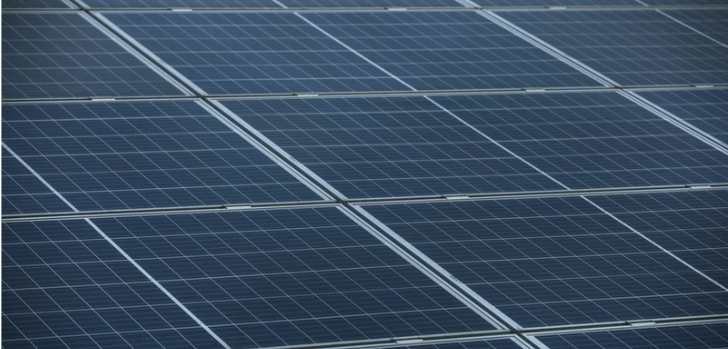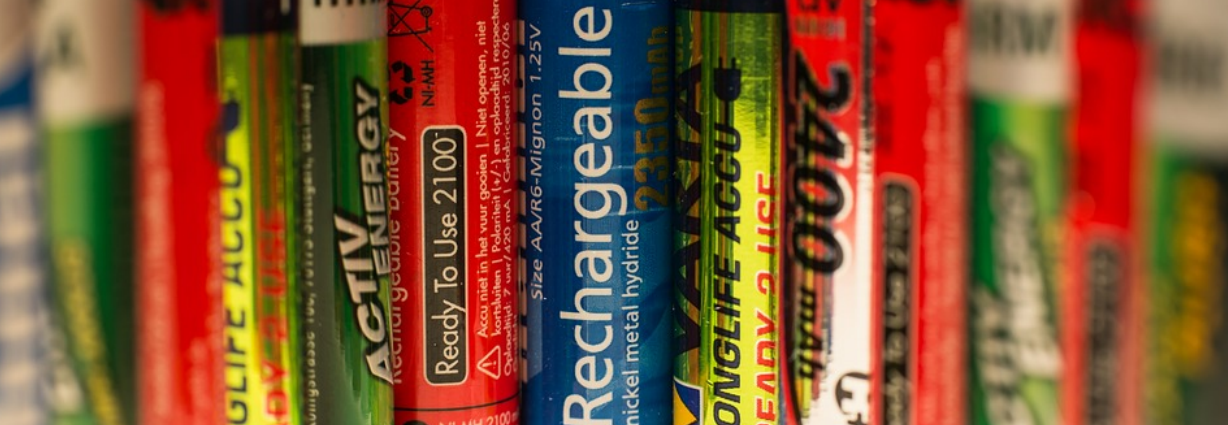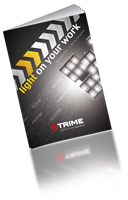Solar Energy & Sustainability Guide For Event Lighting
Introduction: Solar Energy & Sustainable Power For Events Lighting
For Events Lighting
The design, quality, and safety of a lighting system is central to creating the perfect outdoor event. However, with the UK government’s removal of the 80% discount currently offered to diesel users, planners from all sectors are starting to explore alternative options. Solar powered lighting towers are an alternative technology that has been in existence for decades, and which the government is keen to promote, but can it ever shine brightly enough to make an event dazzle?
In this guide, we explore the issue of sustainable events lighting.
Firstly, we examine traditional power sources and their environmental impact. Then, the focus turns towards solar power. The guide explains how solar powered lighting towers work, the design challenges, and the innovations that are improving efficiency and cost-effectiveness. Finally, the guide examines the practicalities of replacing engine powered lighting towers with solar alternatives, including performance, maintenance, and value for money. Although the guide is intended for people in the events and plant hire industries, the information is applicable to all sectors requiring high powered portable outdoor lighting.

Traditional Events Lighting Options
Rugged and reliable, engine powered lighting towers have long been the backbone of the events industry. One of the benefits of engine-powered systems is their lengthy pedigree, which has led to solutions that are reliable and safe. Standard safety features include Automatic Mast Operating Safety System (AMOSS) and auto start/stop sensors, ensuring guaranteed levels of safety and efficiency. The result is technology that is tried, tested, and trusted.
How sustainable are engine powered lighting towers?
Any technology that relies upon fossil fuels will never be carbon neutral. However, there are ways to make the systems greener, less polluting, and more efficient without abandoning fossil fuels altogether. For instance, at Trime we offer engine powered lighting tower solutions with built-in fuel saving and emission reduction features, and these are partnered with energy efficient LED lights. Together, these can deliver hundreds of hours of run time while reducing fuel costs by up to 72%. As such, with the correct design, the sustainability of engine powered lighting towers can be considerable.
What are the barriers to using engine powered lighting towers?
 The UK government is committed to phasing out diesel-powered plant, and there are several reasons for this.
The UK government is committed to phasing out diesel-powered plant, and there are several reasons for this.
Firstly, replacing diesel is necessary to achieve the net zero 2050 CO2 goal. Secondly, diesel is recognised as a major polluter under the Clean Air Act 1956 and the Environment Act 1995. Thirdly, fossil fuels are an economically unstable energy solution, leaving users at risk of sudden price hikes that can leave industries vulnerable.
As of April 1st 2022, the government is starting a national diesel phase out.
This begins with the removal of entitlements to fuel rebates, which prior to April 2022 have offered businesses a generous 80% discount. The underlying plan is that red diesel will become so expensive to use that companies will have no choice but to pursue greener options.
What are the alternative energy options?
While significant funding is being channelled into static large scale solutions such as wind and wave power, these are of little use in remote machinery such as lighting towers and mobile plant. Although possible in theory, the need to be able to move the equipment results in a range of practical headaches. Therefore, the most promising sustainable option is solar power. Solar solutions benefit from being the same size as existing engine powered lighting options, being reliable, safe to operate, and being affordable.
How Is Solar Energy Used In Lighting?
Using the sun’s daytime energy to light the darkness has the potential to offer zero carbon lighting. The underpinning science and technology rely upon basic principles, but the quality of design and choice of materials have a significant influence on the efficiency, efficacy, and cost-effectiveness of the installation. In this section, we look at four key components of solar lighting and explain their importance.
1) The photovoltaic effect
The photovoltaic effect is a physical and chemical reaction caused when light touches a semiconducting material. The light stimulates the atoms, causing a flow of electrons that become electricity. The more easily that the electrons can move, the greater the conductivity and therefore the higher the voltage. As such, achieving the ideal photovoltaic surface requires creating the perfect chemical compound. Generally, the more impurities that are added to the crystal – a process that chemists call ‘doping’ - the more the electrons will be able to move.
Why does the photovoltaic effect matter?
Lots of materials are good enough semi-conductors that they can turn light into electricity. However, the amount of electricity produced always depends on how well the crystals are designed and manufactured. Photovoltaic surfaces can also be doped with different types of impurity to achieve different properties, such as the speed at which energy is generated. As such, when working with solar power, the chemical design is highly influential in the quality of the outcome.
2) The diode
A diode is a physical component that controls the direction of the electrical flow. Like a cut-off valve, diodes create a one-way pathway to prevent stored electricity from flowing backwards through the system. Complex solar set-ups usually have several diodes to ensure that power is in the right place at the right time.
Why does the diode matter?
Solar power provides intermittent energy, so channelling and storing it is important for when systems need to be used on cloudy days or after dark. The quality of the diode is therefore central to the functionality of the system. Diodes that are vulnerable to corrosion will allow energy to leak, leading to sluggish performance or a reduced battery life. The choice of materials, design, and casing are all factors that need to be considered.
3) Rechargeable batteries
Rechargeable batteries are electrical components that collect and store electrical charge. In the case of solar lighting, this means collecting the energy generated by the photovoltaic effect so that it can be accessed after dark. When a bulb is connected to the battery, it draws upon the
electrical charge to make it glow.

Why do rechargeable batteries matter?
Rechargeable batteries are prone to a phenomenon called ‘battery discharge’. This is where the battery holds its charge reasonably well until it reaches around 30%, at which point it starts to drain rapidly even when not in use. Various factors influence the risk of battery discharge, including:
- the operating temperature
- the load the battery is being asked to provide
- the manufacturing materials
- the quality of maintenance
- the charging and discharging cycle
As such, the quality and cost-effectiveness of the solar installation depends firstly on how the batteries are made, and secondly upon how they are maintained.
Light Emitting Diodes (LEDs)
LEDs are a form of solid-state lighting (SSL) technology. Like solar panels, they use a semiconducting material. In the case of LEDs, the purpose of the semiconductor is to transform electromagnetic energy into light. The technology is known for its energy efficiency, with a small charge being capable of producing very intense illumination of between 46 and 75 lumens per watt. In comparison, incandescent lighting produces around 17 to 19 lumens.
Why do LEDs matter?
Their low energy consumption is often cited as the main reason for choosing LEDs. However, there are a few more benefits. For instance, their low brightness output makes LEDs very reliable in poor lighting conditions, and they have a lifespan of up to 50,000 hours – roughly 50 times longer than traditional bulbs. LED technology is also very versatile, with an extensive range of colours, tones, and lumens to achieve the desired aesthetic. As such, the manufacturing quality is the main determiner of solar powered LED performance.
What are the problems with solar lighting installations?
The main challenge with solar lighting is efficiency. Many people will have encountered solar lighting that gradually loses its brightness, or which gives a tepid output after a cloudy day. These issues tend to result from design problems with the photovoltaic surface, the diode, or the batteries. As such, very few commercial settings currently rely entirely on a solar installation, leading to the adoption of less environmentally friendly but considerably more reliable hybrid approaches. The challenge for engineers is to improve both the amount of sunlight that can be harvested and the ways in which it is stored and used. Crucially, this must be achieved in a way that is commercially viable in terms of cost, and practical issues such as space.
How Alternative Energy Is Changing The Face Of Events Lighting
With the goal of improving efficiency at its core, alternative energy developers are revolutionising the potential for zero carbon solutions. There are several key drivers of change, including legislation, consumer demand, and technological innovation. In this section, we look at how and why alternative energy is changing.
Legislation, grants, and incentives
The Paris Agreement (2015) is an international treaty to ensure that global temperatures do not rise more than 2oC before 2050. Governments can design their own pathways for meeting this target. In the UK, the Department for Business, Energy, and Industrial Strategy (BEIS) is offering £177 million in investments in renewable energy technologies, plus a £1 billion Net Zero Innovation fund. The purpose of this funding is to ensure that emerging solutions are affordable, and to cultivate a green revolution. Within the broader framework of the green revolution are further incentives. For instance, the existing Feed-in Tariff (FIT) scheme enables eligible companies to export excess energy from renewable energy systems including sola panels. As new technology emerges, the government is expected to roll out additional incentives to encourage companies to make the switch.
Cultural change and consumer demand
Interest in supporting companies with sustainable energy policies has grown in recent years. Research shows that customers will happily pay up to 3% more to support green initiatives, and in a phenomenon sometimes known as ‘eco-wakening’ consumers are demanding naturepositive change at every level of the supply chain. Office for National Statistics (ONS) figures suggest that 33% of consumers now expect sustainability to be central to brands, and many would select a sustainable option over an alternative. As such, consumers are providing powerful incentives for change at an industry level.
The position of events lighting in sustainability drives
The World Economic Forum (WEF) states that all sectors are affected by the consumer demand for sustainability, and governments around the world have highlighted outdoor events lighting as being a key area of focus. Research suggests that the reason for this is that outdoor events are seen as being vital instruments of cultural wellbeing, as well as being important enablers of safe COVID 19 practices. Countries such as South Korea and China are pushing for contemporary lighting solutions that address energy efficiency and light pollution, and innovations have led to technological improvements in solar lighting solutions that are now being globally embraced.
Technological improvements
Improvements in solar technology have focused on two areas: efficiency and cost. To boost efficiency while reducing costs, innovators have been exploring new materials, new applications for existing materials, and combining multiple materials to increase their effectiveness.
1. Passivated emitter rear cell (PERC)
PERC can be retrofitted to older solar cells to improve the flow of electrons and therefore boost their efficiency. Companies using existing solar lighting systems may be able to improve energy performance with this addition.

2. Heterojunction technology (HJT)
HJT is a thin photovoltaic layer that absorbs any light energy that silicon solar panels miss. The films are cheap and easy to produce and can boost efficiency by up to 21%. Additionally, unlike untreated solar panels and PERC, HJT is not affected by heat or light degradation.
3. Half-cell technology
The amount of sunlight that reaches the system has always been critically linked to efficiency. Even 20% shading can reduce the power by up to 40%. One way of overcoming this is to use half-cell technology, which doubles the number of solar panels within the same area, meaning the loss of a small amount of surface light will affect a small part of the system rather than all of it. This logical and budget-friendly solution is re-shaping solar panel design for greater efficiency.
4. Bifacial panels
Traditional solar panels are ‘monofacial’, meaning sunlight only reaches one side. Bifacial panels are designed to bounce light onto both sides, improving efficiency by at least 10% and sometimes more. Although more expensive than monofacial solar panels, the cost of bifacials continues to fall towards a competitive rate.
5. Perovskite solar cells
Silicon is the traditional choice for photovoltaic cells. However, perovskites such as calcium titanate have excellent electroconductive properties, and, when combined with silicon, perovskites can produce efficiency of nearly 30%. Research in this area is relatively new, but it is already causing waves, not least because calcium titanate film is both cheap and easy to produce.
Ideas on the horizon
1. Building-integrated photovoltaics
Building-integrated photovoltaics (BIPV) are an aesthetic response to integrating environmentally friendly solutions into structures. Currently, BIPV options include creating invisible photovoltaic surfaces on walls, canopies, windows, floors, and curtains, resulting in a seamless finish. Unlike traditional solar panels, BIPV technologies do not require expensive mounting systems, and offer the additional bonus of excellent thermal and sound insulation. Developments in BIPV designs are equally meaningful for portable units, especially regarding durability and easy maintenance.
2. Solar skins
Aesthetics have always been an issue with traditional solar panels, and this can cause a problem in conservation areas, heritage sites, and on listed buildings. A new technology, solar skins are thin filters that use the photovoltaic effect to reflect a digital image under natural light. Any image can be reflected, enabling solar skins to be used to display advertising messages, logos, and backdrops, offering exciting potential for outdoor venues and events. Additionally, solar skins go further towards improving solar technology aesthetics by hiding metal components for a smooth, discrete finish.
3. Solar fabric
Solar fabric is a soft, photovoltaic material that can be used to generate energy anywhere, anytime. Although currently in its early design stages, in the future it’s likely that this technology will be used for an extensive range of applications. For example, it could be used to make clothes that power phones, or to create events wristbands that give wearers access to offers, menus, and itineraries.
Summary
Powered by key drivers including legislation, consumer demand, and scientific innovation, the possibilities of solar lighting in terms of efficiency and range of applications are growing. Today’s installations are increasingly cost-effective, empowering organisations to make energy-friendly choices.
Switching To Solar
There are many reasons why switching to solar powered lighting towers makes sense, although the option may not yet be ideal for everyone. In this section, we outline the considerations to make before choosing to invest.
Benefits of solar powered events lighting
Companies making the switch to solar powered events lighting will notice immediate budget savings. Well-designed solar lighting towers have zero
fuel costs - a particularly welcome feature considering the April 2022 diesel tax – and are not vulnerable to energy price hikes. Solar rigs are also silent, overcoming the noise emission problems of engine powered solutions. Their zero-emission status also helps companies to meet their energy targets, as well as satisfying consumer demand for cleaner lighting solutions. With no wires or mains connection, solar power is also incredibly safe to use, making it a particularly attractive option for outdoor venues.
Maintenance requirements
The battery is central to the efficiency of the system. Therefore, unlike fuel-based technologies, human interaction is required to achieve the best results. The lack of engine means physical maintenance of solar lighting towers is easier than diesel driven alternatives, but on a day-to-day basis care needs to be taken to ensure that the rig has a charging cycle that prevents battery drainage, that batteries are kept clean and dry, and that connecting parts such as diodes are free from corrosion. As such, companies need to think carefully about issues such as storage and maintenance schedules. In the case of events management, this means planning in advance to make sure the solar lighting towers are fully charged, as well as long-term planning to replace batteries over time.
Solar lighting equipment costs
Currently, solar powered lighting systems are more expensive than their engine powered or mains-connected counterparts. This cost reflects the manufacturing price of high-quality solar panels as well as reliable batteries, and supports further innovations in the industry. However, as the systems are completely free to run, events providers can easily recoup the cost over time. Additionally, as consumers are willing to pay extra for sustainable solutions, some of the cost of investment can be immediately passed on. For a specific price breakdown, the team at Trime can help.
Why Choose Trime?
At Trime, we have been supporting the events and plant hire industry since 2016, developing a range of energy efficient lighting solutions. During that time, we have seen the growing need for sustainable, cost-effective lighting come to the fore, and have responded by supporting our clients in achieving low and zero-emission installations.
We combine research and innovation with practical experience to offer eco-friendly products that really work in outdoor environments here in the UK. Our innovative TZERO Pro range, in particular, features high-performance, low-maintenance, zero emission lighting solutions with excellent reliability.
What next?
If you’re interested in exploring sustainable lighting options, or if fuel tax changes are rendering your financial planning difficult, solar power may be the answer. To discuss your events lighting requirements, our friendly team is here to help.
Tel: 01480 220 500
Email: sales@trimeuk.com
Other Free Downloadable Resources
You may be interested in one of our other free resources. Please follow the links below to find out more:




![image--108[1]](https://blog.trimeuk.com/hs-fs/hubfs/image--108%5B1%5D.png?width=278&name=image--108%5B1%5D.png)
![image--110[1]](https://blog.trimeuk.com/hs-fs/hubfs/image--110%5B1%5D.png?width=338&name=image--110%5B1%5D.png)
![image--112[1]](https://blog.trimeuk.com/hs-fs/hubfs/image--112%5B1%5D.png?width=279&name=image--112%5B1%5D.png)


